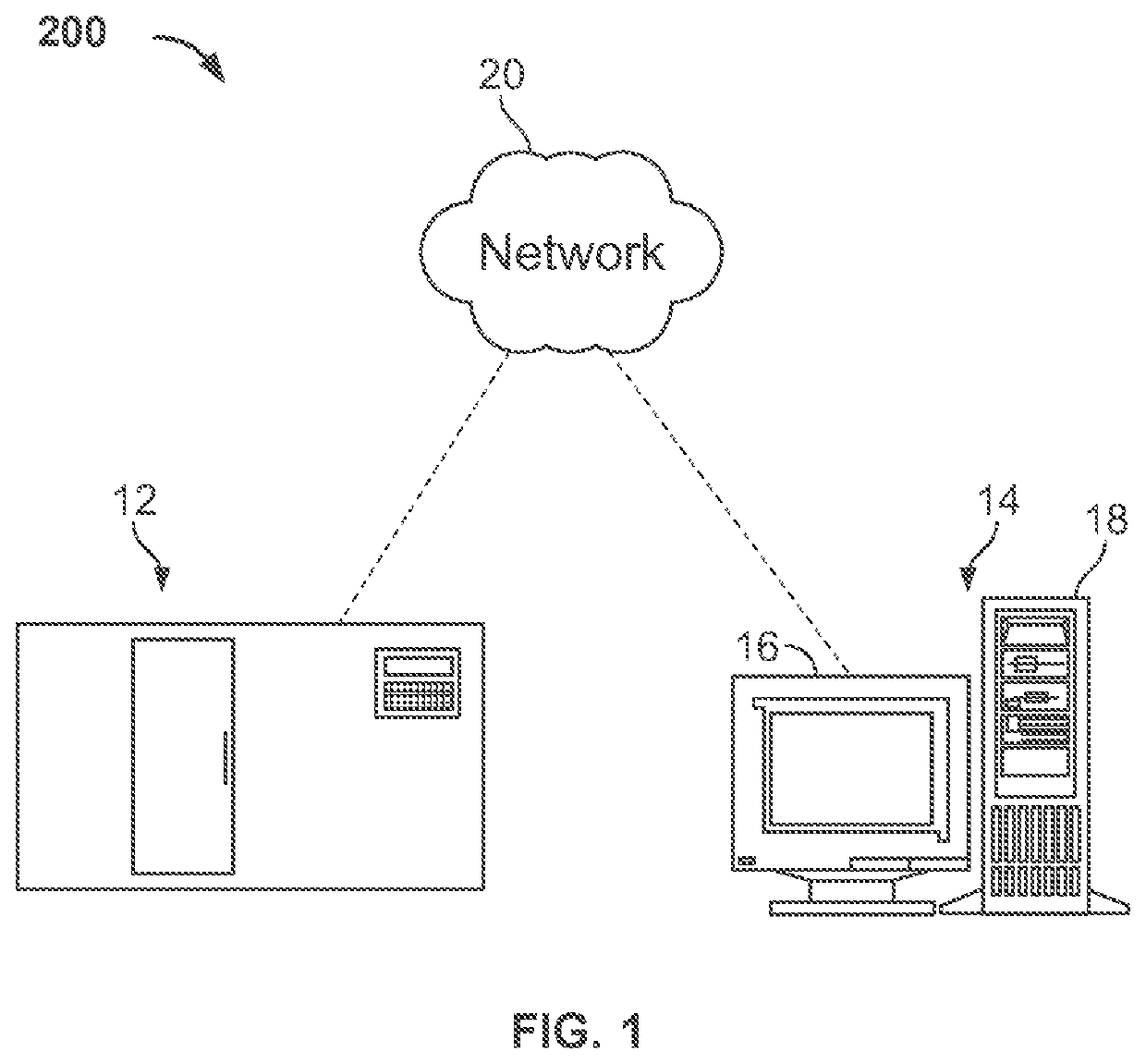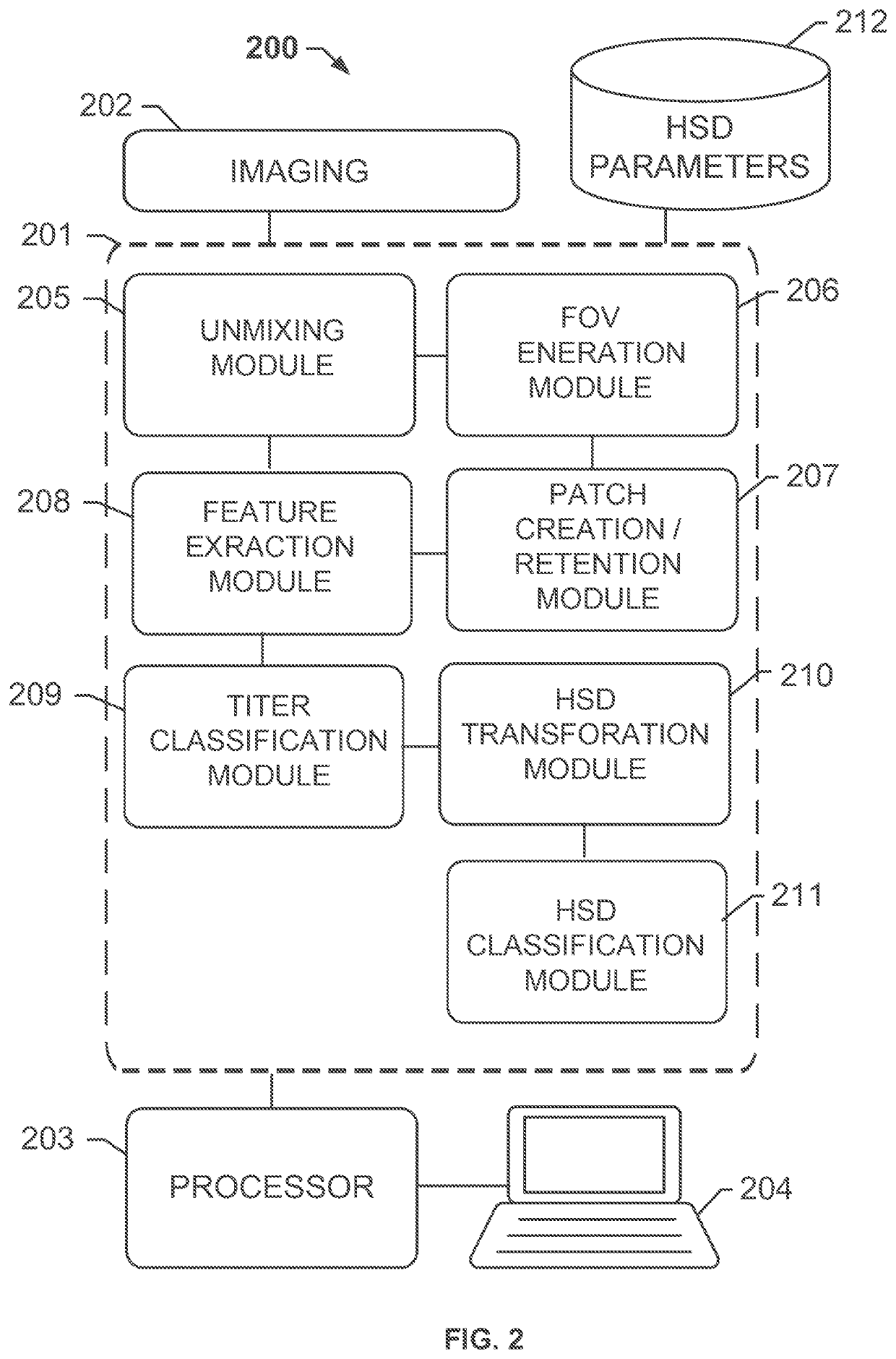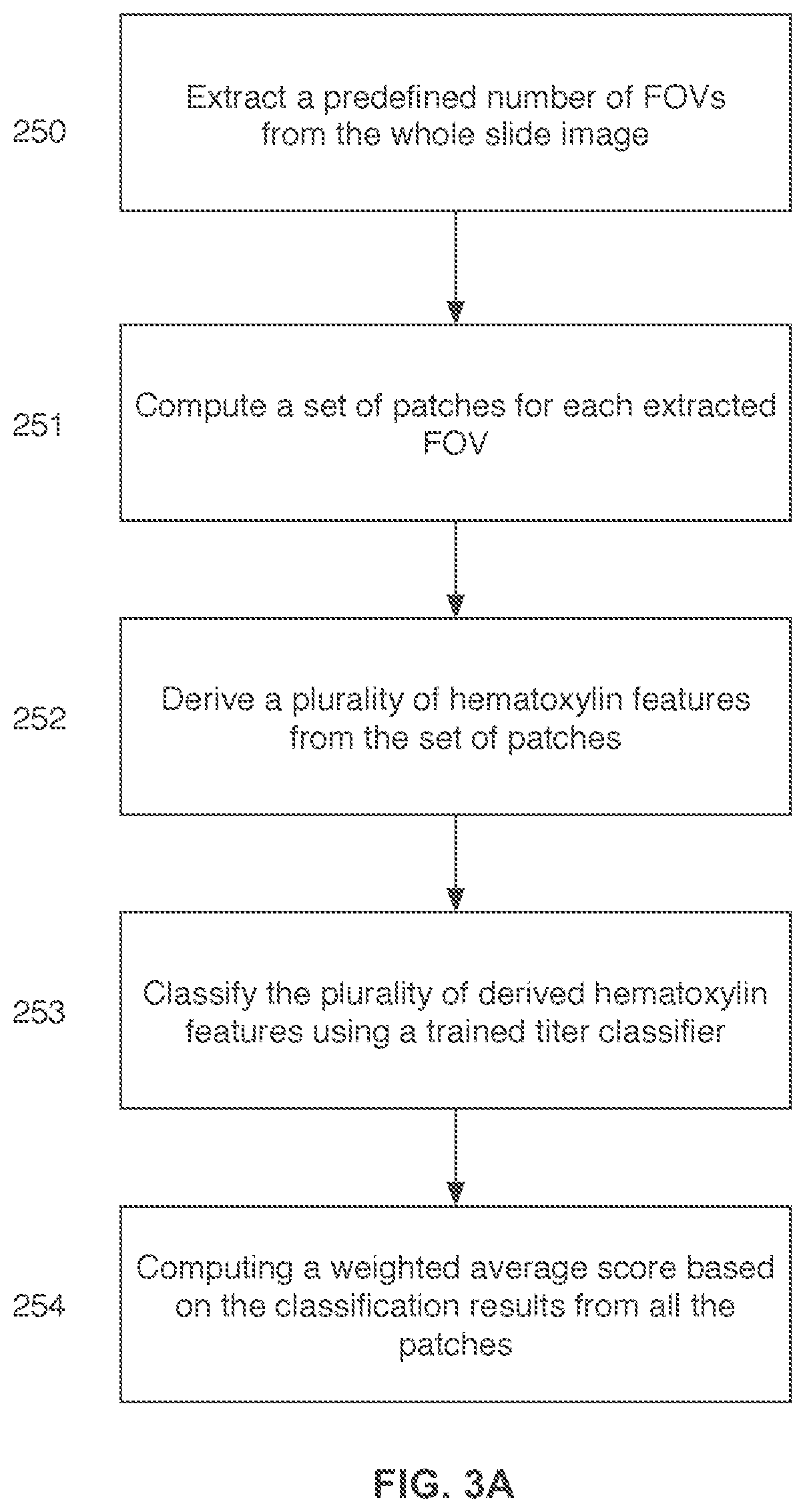Automatic assay assessment and normalization for image processing
- Summary
- Abstract
- Description
- Claims
- Application Information
AI Technical Summary
Benefits of technology
Problems solved by technology
Method used
Image
Examples
Example
Example 1—Imaging Algorithm Performance
[0203]To demonstrate the effectiveness of color normalization, we evaluated the performance of a cell detection algorithm in the images with and without normalization for different titer levels. The number of cells should be relatively constant along different titers, but if no normalization is applied, an increasing trend could be observed. FIGS. _ and _ show the variation with respect to titer 4 for 12 different slides (from 4 blocks) in the percentage of stained and non-stained cells with respect to the total number of cells. As shown, after a titer level of 4 there is an overestimation of the number of non-stained cells for the non-normalized images but this problem was alleviated when the stain normalization was applied.
[0204]Dataset and Results:
[0205]The performance of the proposed method was evaluated on a dataset consisting of 3020 whole slide images coming from 3 different scanners; for convenience, they are referred to as Scanner 1, S...
Example
Example 2—HSD Coordinates Alignment For Pure HTX Stain Pixels
[0210]HSD transform is performed on both the template and the target WSI, which converts the RGB optical density (OD) value to HSD coordinates (cx, cy, D). The first two coordinates contain the chromatic information which is independent of the amount of stain; while the last one is the density component which is linearly related to the stain concentration. The distribution of the (cx, cy) components in the target WSI is aligned to that in the template, and the density component is scaled to match the template. In our framework, instead of applying HSD coordinates alignment to all the stains, we adopt this alignment process for normalizing the pure HTX stain only. This is to maximally match the color and density distribution of HTX stain in the target image to that in the template image. The final normalized pure HTX pixels are obtained by transforming from HSD to RGB using the aligned HSD coordinates (cx′, cy′, D′). In our...
Example
Example 3—Special Handling of HTX Stain Mixture Pixels
[0211]When HTX stain is mixed with other stains, it is not feasible to derive the actual color and density distribution of the HTX stain in the mixture for HSD coordinates alignment. Therefore, we perform a “global” alignment to the average color and density of the pure HTX stain in the template image. In order to do that without altering the DAB stain in the mixture, we apply color deconvolution to both the template and the target image. Let HTXI (DABI) be the HTX (DAB) component from color deconvolution of the target image, and HTXT (DABT) be the HTX (DAB) component of the template image. For density alignment, we shift and scale HTXI to have the same mean and standard deviation as HTXT, obtaining HTXf. Then, RGB reconstruction is performed using HTXf and DABI. For color alignment during RGB reconstruction, instead of employing the original HTX color reference vector used for color deconvolution, we use the normalized average R...
PUM
 Login to View More
Login to View More Abstract
Description
Claims
Application Information
 Login to View More
Login to View More - R&D
- Intellectual Property
- Life Sciences
- Materials
- Tech Scout
- Unparalleled Data Quality
- Higher Quality Content
- 60% Fewer Hallucinations
Browse by: Latest US Patents, China's latest patents, Technical Efficacy Thesaurus, Application Domain, Technology Topic, Popular Technical Reports.
© 2025 PatSnap. All rights reserved.Legal|Privacy policy|Modern Slavery Act Transparency Statement|Sitemap|About US| Contact US: help@patsnap.com



